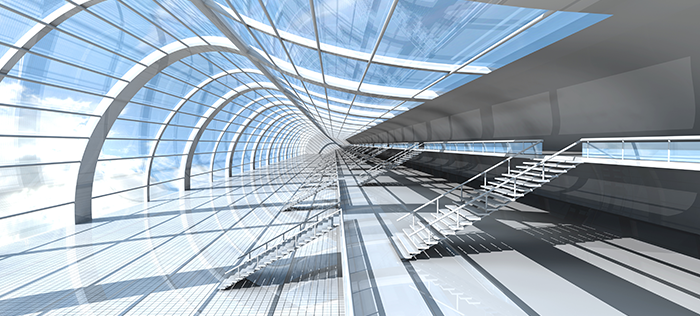The Streamsoft Next programming platform
The Streamsoft Next platform is a set of tools created by Streamsoft programmers, used to build the Streamsoft Verto system. The platform is delivered together with the system, which allows for consistent and comprehensive extension of solutions specific for a given industry or customer. Due to the platform, the programmer, analyst, consultant or other people involved in the implementation, maintenance and development of the system have access to a shared working environment.

Architecture
The Streamsoft Verto system built on the Streamsoft Next development platform consists of three main physical layers.

Technologies used
Streamsoft proprietary and publicly available technologies were used to design the IT tools.

Build your own ERP
Due to the solutions of the Next platform it is possible to freely expand the functionality of the system according to own IT needs.
Benefits
Independence
The “Streamsoft Next” platform is ready for technology changes that do not require reconstruction of the business part of the system. At the platform level, without the need to change the business code, it is possible to modify the supplier of database engine, application server or client technology at an acceptable level of transition costs. The world is changing dynamically, especially in IT, and we are still standing and constantly using the best and most optimal technologies.
Scalability
The Streamsoft Next platform provides scaling in two dimensions: horizontal and vertical.
In the horizontal dimension, we are ready to handle from individual to thousands of workplaces , while maintaining high efficiency. All technologies in all layers of the system have been selected so as not to limit scalability in any way. In the data layer, we use relational database. In the processing layer, we chose technologies centered around JavaEE industry-standards. By combining these technologies with the Internet architecture based on the HTTP/S standard protocol, we get high scalability with a large margin of security.
In the vertical dimension, scalability is the ability to adapt the system to the needs of the company in which it is implemented, and in the future its capacity to grow along with the development of entity needs.
Openness
Systems built on the Streamsoft Next platform are, in the good sense of the word, an open systems. This openness can be expressed on two levels. We make sure that the system is open to bilateral integration with other systems and multilevel extension with new functionalities. Our business partners and clients have access to the same tools and resources as the developers of the Streamsoft Verto system, and due to this they can develop their own functionalities by integrating them on the platform into one consistent solution. Openness is also the readiness of the system for extending existing solutions by our Partners and the IT departments of our clients. Plugin architecture available practically in every layer of the system, construction of the system from dynamically bound components as well as sets of tools and good practices – all this gives a sense of security and guarantees that the system can grow together with the development of the company.
Ergonomics
We put great emphasis to ensure that products created on the platform are intuitive and easy to use. To achieve this, the platform takes on the task of managing creation of the user interface, which ceases to be a collection of activities of various creators, and becomes a coherent system focused on the ease and ergonomics of service.
Interface creators can forget about technologies with complicated aspects related to their mastery. The Streamsoft Next platform hides these tedious details from them, giving in return pure, declarative way to build an ergonomic user interface. The platform does not impose client technology. By creating the default client layer, we use abstract terms: view, action, filter, editing module, layout of controls, declaring them, specifying their attributes and associations. With such definition created mainly in JAVA and XML – the platform makes client application in one of the selected technologies.